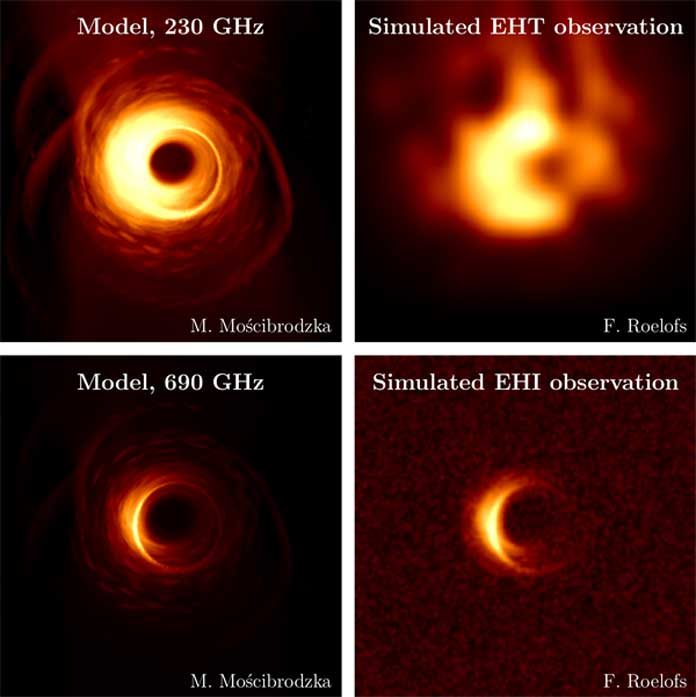Recently, the Event Horizon Telescope has released the first direct image of a black hole and its neighborhood. Now, astronomers have the challenge of capturing, even more, sharper images in order to test Einstein’s Theory of General Relativity.
Now, astronomers at the Radboud University in collaboration with European Space Agency (ESA) and others putting this concept forward to achieve this by launching radio telescopes into space.
They have plans of launching two or three satellites in a circular orbit around the Earth to observe black holes. The concept goes by the name Event Horizon Imager (EHI). In their new study, the scientist’s present simulations of what images of the black hole Sagittarius A* would look if they were taken by satellites like these.
According to scientists, sharper images of black holes may lead to detail insights that can be used to test Einstein’s Theory of General Relativity.
Freek Roelofs, a PhD candidate at Radboud University and the lead author of the article said, “There are lots of advantages to using satellites instead of permanent radio telescopes on Earth, as with the Event Horizon Telescope (EHT). In space, you can make observations at higher radio frequencies, because the frequencies from Earth are filtered out by the atmosphere. The distances between the telescopes in space are also larger. This allows us to take a big step forward. We would be able to take images with a resolution more than five times what is possible with the EHT.”
Radio Astronomy Professor Heino Falcke says, “Sharper images of a black hole will lead to better information that could be used to test Einstein’s Theory of General Relativity in greater detail. The fact that the satellites are moving around the Earth makes for considerable advantages. With them, you can take near perfect images to see the real details of black holes. If small deviations from Einstein’s theory occur, we should be able to see them.”
The EHI will likewise have the capacity to picture around five additional black holes that are smaller than the black holes that the EHT is right now focussing on. The last is Sagittarius A* at the focal point of our Milky Way and M87* at the focal point of Messier 87, a monstrous system in the Virgo Cluster.
In addition, scientists have simulated what they would be able to see with different versions of the technology under different circumstances. For this, they made use of models of plasma behavior around the black hole and the resulting radiation.
Volodymyr Kudriashov, a researcher at the Radboud Radio Lab who also works at ESA/ESTEC said, “The concept demands that you must be able to ascertain the position and speed of the satellites very accurately. But we really believe that the project is feasible.”
“Consideration also has to be given to how the satellites exchange data. “With the EHT, hard drives with data are transported to the processing center by airplane. That’s of course not possible in space. In this concept, the satellites will exchange data via a laser link, with the data being partially processed on board before being sent back to Earth for further analysis. There are already laser links in space.”
The study is published in the journal Astronomy and Astrophysics.
